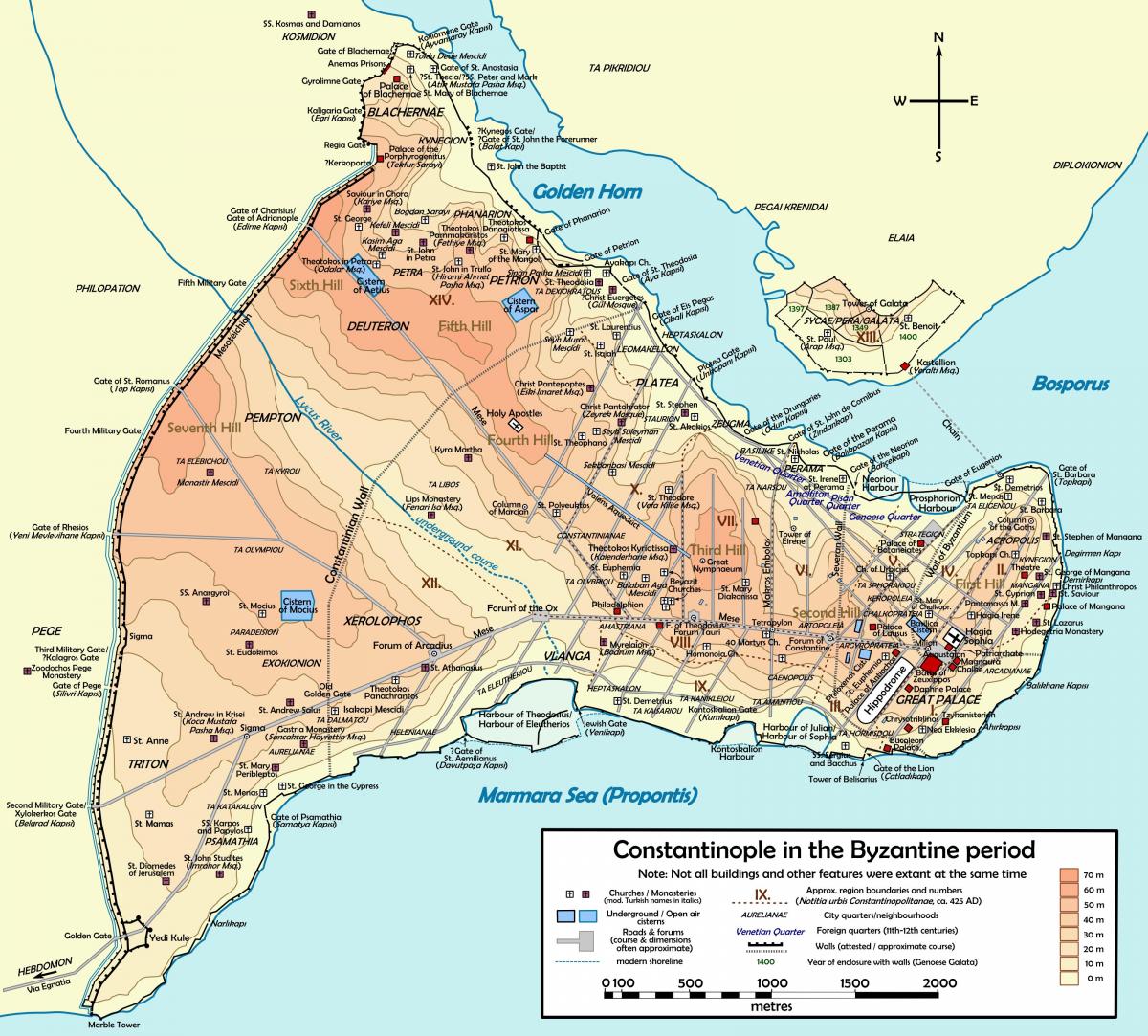search
Constantinople map
Constantinople in map. Constantinople map (Turkey) to print. Constantinople map (Turkey) to download. The Byzantine Empire, often called the Eastern Roman Empire or simply Byzantium, existed from 330 to 1453 CE. With its capital founded at Constantinople by Constantine I (r. 306-337 CE), the Empire varied in size over the centuries, at one time or another, possessing territories located in Italy, Greece, the Balkans, Levant, Asia Minor, and North Africa (see constantinople map). A Christian state with Greek as the official language, the Byzantines developed their own political systems, religious practices, art and architecture, which, although significantly influenced by the Greco-Roman cultural tradition, were distinct and not merely a continuation of ancient Rome.
The beginnings of the Byzantine Empire lie in the decision of Roman emperor Constantine I to relocate the capital of the Roman Empire from Rome to Byzantium on 11 May 330 CE. The popular name Constantinople or ‘City of Constantine’ soon replaced the emperor own official choice of ‘New Rome’ (see constantinople map).
The new capital had an excellent natural harbour on the Golden Horn inlet and, straddled on the border between Europe and Asia, could control the passage of ships through the Bosphorus from the Aegean to the Black Sea, linking lucrative trade between west and east. A great chain stretched across the Golden Horn entrance as its shown in constantinople map, and the construction of the massive Theodosian Walls between 410 and 413 CE meant that constantinople was able to withstand time and again concerted attacks from both sea and land. Over the centuries, as more spectacular buildings were added, the cosmopolitan city of constantinople became one of the finest of any epoch and certainly the richest, most lavish and most important Christian city in the world.
The Byzantine government followed the patterns established in imperial Rome. The emperor was all-powerful but was still expected to consult such important bodies as the Senate. The Senate in Constantinople (see constantinople map), unlike in Rome, was composed of men who had risen through the ranks of the military service, and so there was no senatorial class as such. Without elections, Byzantine senators, ministers, and local councillors largely acquired their position through imperial patronage or because of their status as large landowners.


